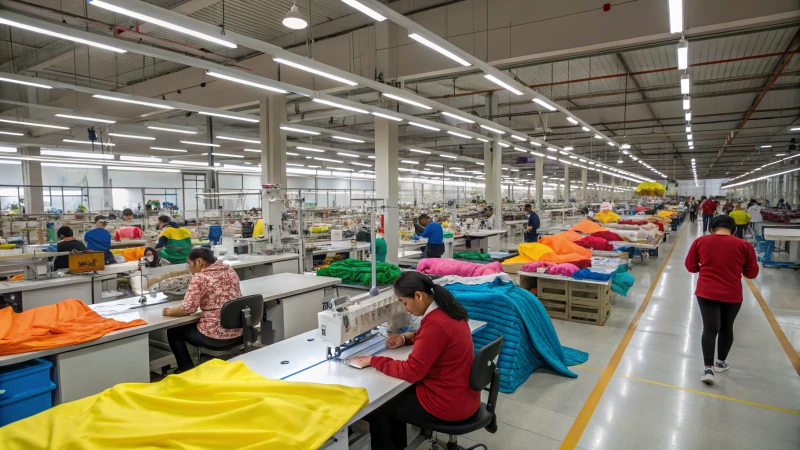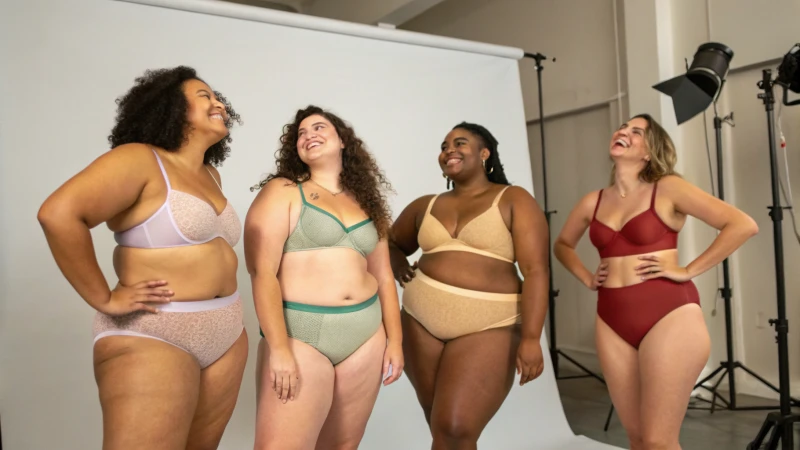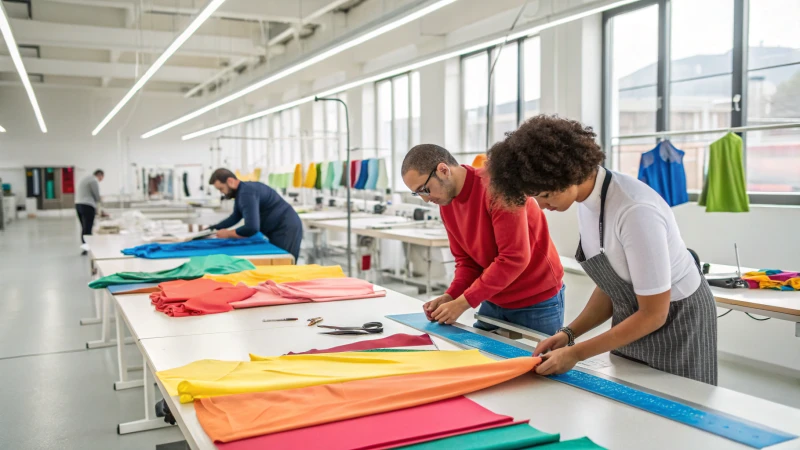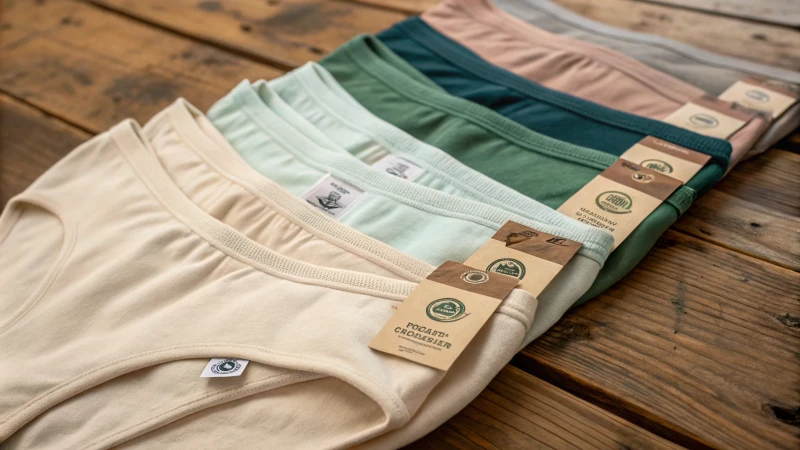
Picture turning your underwear drawer into a paradise of eco-friendliness!
I look for sustainable underwear brands by checking if they use eco-friendly materials like organic cotton. Brands should ensure fair wages and provide safe working conditions. Minimal packaging is also important. Trusted certifications like GOTS and OEKO-TEX really matter. Brands should focus on circular economy principles too.
The journey to discovering really sustainable underwear may offer great rewards. I learned that understanding each indicator very deeply lets me choose products matching my values. Learning about the certification process gives insight. Knowing the details of ethical manufacturing helps too. Every piece of knowledge brings me closer to creating a positive impact. This is on both the planet and society. Let’s explore each part and see how they contribute to sustainability.
Organic cotton is a key indicator of sustainable underwear.True
Organic cotton reduces environmental impact due to fewer chemicals.
All underwear brands with minimal packaging are sustainable.False
Minimal packaging alone doesn't ensure ethical production practices.
Why Are Organic Cotton and Tencel Considered Eco-Friendly?
Have you ever wondered why some fabrics are called eco-friendly? I want to take you on a journey. This journey leads through the fascinating world of organic cotton and Tencel.
Organic cotton and Tencel are very eco-friendly. They are kind to the environment. Organic cotton does not use harmful pesticides. This makes it safer for nature. Tencel uses a closed-loop system. This method recycles water and solvents. It reduces waste effectively. Waste is minimized.
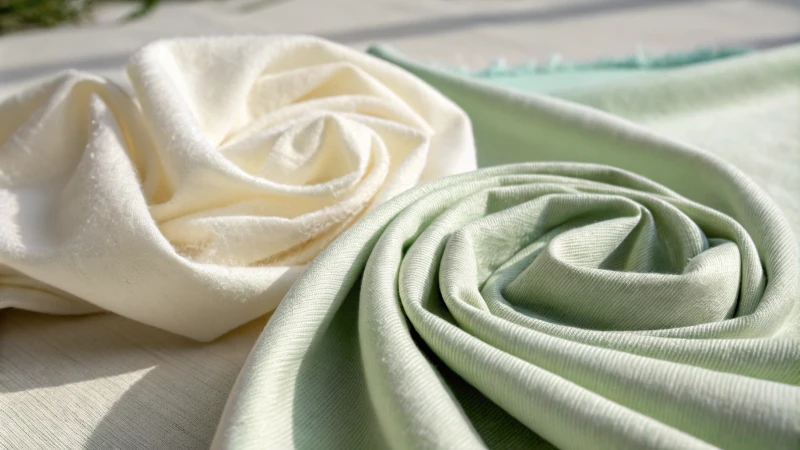
Understanding the Basics of Eco-Friendly Materials
I felt very amazed when I first learned about eco-friendly materials like organic cotton and Tencel. Imagine cotton that grows without harmful synthetic fertilizers or pesticides. This organic cotton gives nature a chance to breathe and thrive. It helps the soil stay healthy and supports more plant and animal life. Nature, in turn, thanks us for using organic options. Tencel, derived from eucalyptus trees, uses a smart process that reuses its solvents. Nothing goes to waste, almost like a magic trick.
Organic Cotton: From Farm to Fabric
My journey with organic cotton started at a farm using rain-fed agriculture. I remember when the farmer explained their methods. They rotate crops and use compost to enrich the soil naturally. This is efficient farming! Conventional cotton uses a lot of water, like a very thirsty runner. Organic cotton, however, uses less and saves water wisely.
| Feature | Organic Cotton | Conventional Cotton |
|---|---|---|
| Water Usage | Low | High |
| Pesticides | None | High |
| Soil Health | Enhanced | Degraded |
The Science Behind Tencel's Eco-Friendliness
Tencel feels as soft as a fluffy cloud and is also very strong. Its production process impressed me a lot. It uses less energy and water compared to regular fibers. The process recycles solvents and keeps emissions low minimizes emissions1. Another bonus, Tencel breaks down naturally without harming the environment; it's truly biodegradable.
The Role of Certifications
Finding your way through certifications like Global Organic Textile Standard (GOTS) and OEKO-TEX might feel overwhelming sustainability2. Yet, they are very helpful for buyers who care about the planet. These labels confirm that materials meet strict environmental rules preserve soil health3. They give confidence that our choices are sustainable.
Understanding these points helps businesses and consumers decide wisely to include eco-friendly materials in life. Maybe it's a small step for us, but it's a significant step for sustainability.
Organic cotton uses less water than conventional cotton.True
Organic cotton relies on rain-fed agriculture, reducing water usage.
Tencel production releases high levels of emissions.False
Tencel's closed-loop process minimizes emissions and recycles solvents.
Why Are Certifications Like GOTS and OEKO-TEX Important?
Do you ever wonder why some clothes feel better and safer for your skin? Certifications might be the reason. GOTS and OEKO-TEX are important. Let’s explore why they matter.
Certifications such as GOTS (Global Organic Textile Standard) and OEKO-TEX guarantee that textile products are safe and environmentally friendly. They also confirm ethical production processes. These certifications offer transparency and foster trust among buyers. People who care about the environment find them very important. Shoppers rely heavily on these certifications.
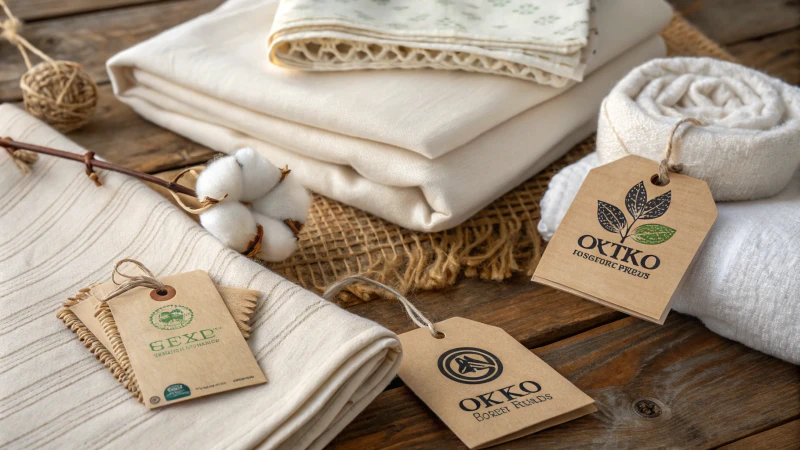
Understanding GOTS and OEKO-TEX Standards
When diving into sustainable fashion, I felt overwhelmed by the many certifications. At first, they seemed confusing. Now, they feel like trusted friends in the textile industry.
GOTS or Global Organic Textile Standard watches over organic textiles like a caring guardian. It checks that organic fibers are used and removes dangerous chemicals. It also insists on fair labor. A parent once shared with me how GOTS certification comforted them when buying baby clothes. They felt at ease knowing safe materials touched their child's skin. Learn more about the GOTS certification process4.
OEKO-TEX focuses on safety from harmful substances. This certification tests every part of a garment for safety. It's like a protective shield against dangerous chemicals. When I shop for my family, especially the kids, the STANDARD 100 label reassures me. I know their clothes are safe. Explore what OEKO-TEX tests involve5.
| Certification | Focus | Key Features |
|---|---|---|
| GOTS | Organic Production | Organic fibers, no toxic chemicals, fair labor |
| OEKO-TEX | Chemical Safety | Tests for harmful substances, safe for human use |
The Consumer Perspective
These certifications act like an insurance policy for peace of mind. People are more aware of textiles' impact on health and the earth. As a parent, buying a baby onesie isn't just about appearance; I choose OEKO-TEX certified onesies6 to protect my child's sensitive skin.
Implications for Businesses
For businesses, following these standards changes the game. Imagine selling products that are stylish, safe, and sustainable—that is a strong competitive advantage! Brands build loyalty by adopting GOTS standards7. This proves sustainability is a smart business strategy, not just a trend.
These certifications help businesses follow international rules as global markets enforce stricter textile regulations. Having GOTS or OEKO-TEX certification eases entry into these markets.
Ethical and Environmental Impact
Choosing certified products means supporting ethical labor and environmental care. By purchasing them, we back fair wages and safe conditions while helping reduce the ecological footprint of textile production through sustainable methods.
GOTS supports organic farming, reducing pollution and saving biodiversity. Read more on the environmental benefits8.
Navigating the Certification Maze
GOTS and OEKO-TEX are notable certifications; others like Fair Trade focus on social justice aspects ensuring equitable trading conditions. Businesses may need several certifications to fully commit to sustainability and ethics.
In summary, these certifications don't cover every aspect of textile production yet symbolize important steps toward a more transparent and responsible industry. Understanding each certification helps consumers and businesses make choices that truly align with their values.
GOTS mandates the use of organic fibers.True
GOTS certification requires textiles to be made from organic fibers.
OEKO-TEX ensures fair labor practices.False
OEKO-TEX focuses on chemical safety, not labor practices.
How Do Ethical Manufacturing Practices Impact Sustainability?
Picture a world where every purchase helps both the Earth and the workers behind the product. Sounds perfect, right?
Ethical manufacturing practices greatly improve sustainability. These methods use eco-friendly materials and promote fair working conditions. They also help reduce waste. This results in long-term benefits for both the environment and society. Long-term benefits are vital for our planet.

The Role of Eco-Friendly Materials
I remember when I first discovered eco-friendly materials. It was like finding a treasure chest with organic cotton, Tencel9, and recycled fabrics. Each material helps reduce environmental harm. Choosing these materials helps save resources and lowers pollution. It feels like a promise to help the planet. Tencel in clothing greatly cuts down on water use and breaks down naturally. Tencel is amazing.
Fair Labor Standards
Thinking about my journey into ethical manufacturing, I saw how vital fair labor standards are. Workers must receive fair pay and work in safe spaces. This is a moral guide to social fairness. Transparent supply chains, certified by GOTS certification10, show consumers that labor ethics are upheld.
Waste Reduction Strategies
"Waste not, want not" is a phrase seen in brands that cut waste using innovative methods. They use minimal packaging or recycling programs. They often choose materials that can be recycled or composted, reducing their carbon impact. By following a circular economy11, they design products to last and to be reusable. This vision of a future with less waste is inspiring.
| Certification | Focus Area |
|---|---|
| GOTS | Organic Textiles |
| OEKO-TEX | Safe Chemical Use |
| Fair Trade | Ethical Labor Practices |
Impact on Brand Reputation
Brands with ethical practices not only do well for the planet - they also gain a competitive advantage. Consumers today prefer supporting companies that care for sustainability. It benefits both the environment and the brand’s reputation. It's truly a win-win situation.
Long-term Societal Benefits
Ethical manufacturing has more than just environmental impact. It offers long-term benefits to society. Supporting fair labor and sustainable methods helps build communities and stabilizes economies. This complete approach matches global goals for sustainability and supports a healthier planet for future generations.
Exploring these areas helps businesses understand the broad effects of ethical manufacturing, driving both environmental and social progress.
Eco-friendly materials reduce environmental footprint.True
Eco-friendly materials like organic cotton minimize resource depletion.
Fair labor standards have no impact on sustainability.False
Fair labor ensures social equity, a key aspect of sustainability.
Why is Minimal Packaging Important in Sustainable Fashion?
Picture yourself opening a new piece of clothing. You feel as excited about the packaging or its simplicity, as you do about the clothing.
Minimal packaging in sustainable fashion cuts down waste. It uses recyclable or compostable materials. This approach improves a brand's image. It also reduces the carbon footprint. Eco-conscious consumers really appreciate this. It is very important in today’s eco-friendly market.
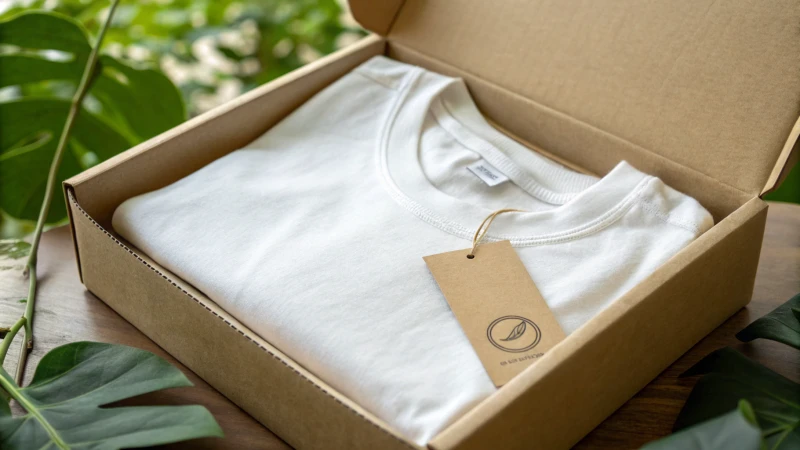
Environmental Impact Reduction
I remember receiving a package that was very simple. It felt like a breath of fresh air. The brand used just a recyclable sleeve to protect the garment. I thought about all the waste I had seen in other packaging. Minimal packaging uses fewer materials, usually taken from sustainable sources. This reduces the carbon footprint12 and keeps more waste out of landfills. Some brands use compostable or biodegradable options, further reducing their environmental impact. These choices significantly cut down on waste.
Improving Brand Image
Consumers are becoming really eco-conscious. Transparency in sustainability is crucial for many people. Brands with minimal packaging stand out as leaders in environmental responsibility. They attract green consumers13 who support brands sharing their values. These brands connect well with consumers.
Cost-Effectiveness
Cutting back on packaging reduces costs. Fewer materials lead to lower production expenses. Brands can reinvest those savings into other sustainable practices or improve product quality.
Here's a simple cost comparison:
| Packaging Type | Average Cost per Unit |
|---|---|
| Traditional | $0.50 |
| Minimal | $0.30 |
Minimal packaging can indeed save money.
Consumer Expectations and Trends
Today's buyers do not just want products; they crave experiences that match their personal values. When I pick a brand that uses minimal packaging, it feels like joining a movement towards sustainability and simplicity14. This choice aligns with modern consumer values.
Innovative Designs in Minimal Packaging
Minimal does not mean boring. Some brands use recycled materials15 creatively in their designs. They prove that products can be both eco-friendly and stylish by balancing function and style.
Considering these points, minimal packaging is not just a trend; it is an important part of sustainable fashion influencing ecological and economic aspects while meeting changing consumer expectations.
Minimal packaging reduces carbon footprint in fashion.True
Using fewer materials sourced sustainably lowers emissions during production and transport.
Minimal packaging increases production costs for brands.False
Minimal packaging typically uses fewer materials, reducing overall production costs.
Conclusion
Discover how to identify sustainable underwear brands by evaluating eco-friendly materials, ethical practices, certifications like GOTS and OEKO-TEX, and minimal packaging for a positive environmental impact.
Discover how Tencel's closed-loop production reduces environmental impact by recycling solvents and minimizing waste. ↩
Learn about these certifications and how they verify the environmental sustainability of textile products. ↩
Explore how organic cotton practices help maintain soil quality and biodiversity, ensuring long-term sustainability. ↩
Discover the comprehensive steps involved in obtaining GOTS certification to understand its rigorous standards. ↩
Gain insights into OEKO-TEX's testing procedures to appreciate its commitment to product safety. ↩
Ensure your baby's safety by understanding why OEKO-TEX certification is crucial for baby textiles. ↩
Explore how achieving GOTS certification can enhance brand reputation and open new markets. ↩
Learn about the positive ecological impact of using organic materials in textile production. ↩
Learn about Tencel's eco-friendly properties and its role in sustainable fashion. ↩
Discover how GOTS certification ensures ethical textile production. ↩
Explore the advantages of a circular economy in reducing waste and enhancing sustainability. ↩
Understand how minimal packaging can significantly reduce a brand's carbon emissions and its overall environmental impact. ↩
Learn how attracting green consumers can enhance brand loyalty and long-term business success. ↩
Explore current trends in consumer preferences towards sustainable and minimalist products. ↩
Discover creative examples of how brands are using recycled materials for eco-friendly packaging. ↩


